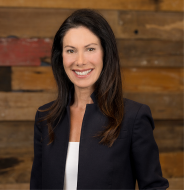October 2025 Newsletter
Empowering Donors' Journeys
A Note from Emily Joslin, Philanthropic Advisor

As part of my role at Gulf Coast, I enjoy welcoming new donors and ensuring they feel supported as they start their charitable journey with us. I work closely with them to create their new fund, guide them through the process of making grants, and invite them into the Gulf Coast family. We have a very personalized approach and take time to understand each donor’s areas of interest, values, and long-term goals for giving. By learning what inspires them, I can help connect their generosity with opportunities for real impact in the community.
I value our relationship with a donor’s professional advisory team to ensure their philanthropic plans align with their overall financial and estate strategies. When plans and strategies are an excellent complement to their investment or estate planning, it means more impact for the causes they love. Our goal is to always work closely together to help clients - who then also become our donors - fulfill their philanthropic wishes.
Ultimately, my role is about building relationships with both donors and their professional advisors that make giving more strategic, impactful, and rewarding.
TRENDING THIS MONTH
There’s already a lot going on in October, and you can add National Estate Planning Awareness Week, from October 20-26. It was adopted in 2008 to help the public understand what estate planning is and why it is such a vital component of financial wellness. Gulf Coast is happy to offer tips to help you tap the momentum to inspire your clients to update their financial plans, estate plans, and charitable giving strategies.

MAKING THE MOST OUT OF ESTATE PLANNING WEEK
For many attorneys, financial advisors, and CPAs, estate planning is part of your client conversations every single month, week, and day of the year. You never hesitate to remind clients to update their wills, trusts, and financial plans as circumstances change in their lives.
Even though you remind your clients regularly about the importance of having an updated estate plan, still, estate planning winds up at the bottom of many to-do lists. That’s why it is very helpful when clients are motivated by reminders from other sources that validate what you tell them on a regular basis. Such is the case with National Estate Planning Awareness Week, which falls between October 20 and 26 this year. This is a great time to check in with clients not only related to the estate plan provisions for distributions to their heirs, but also the provisions in their estate plans to leave a gift to one or more causes that are important to them.
Gulf Coast Community Foundation is here to help. Here are a few suggested steps for making the most of National Estate Planning Week with your clients.
Use the OBBBA as an ice breaker
First, remind clients that the One Big Beautiful Bill Act has changed the landscape for charitable deductions, especially for your clients who have been in a gray area in recent years as to whether or not they itemize their deductions. For high income earners, 2025 presents opportunities to “front load” charitable deductions through a donor advised fund at Gulf Coast before the floor and cap limits kick in next year.
Bridge the conversation to estate gifts
Second, while you are on the subject of charitable giving, remind your clients that now is a perfect time to check in on their plans to include gifts to charity in their wills, trusts, or beneficiary designations. Clients will appreciate refamiliarizing themselves with the provisions they’ve already included and making adjustments as needed. If a client has not yet arranged for a legacy gift to charity, and the client makes regular charitable gifts each year, evaluate whether it also makes sense to include an estate gift or set up and designate a fund at Gulf Coast as a beneficiary of their investment or retirement account. As an added bonus, in most cases, with advanced planning, your clients can create and later modify the criteria for a fund at Gulf Coast, eliminating the need for creating a codicil to their will if they would like to change their charitable beneficiaries. Many clients who are very philanthropic during their lifetimes simply have not stopped to consider this idea and will often welcome the discussion.
We look forward to working with you and your clients in October … and in every single month of the year.

THREE CLIENTS. THREE SOLUTIONS. ONE COMMON THEME.
We’ve rounded the corner into the fourth quarter! As the calendar year draws to a close, you’re likely well aware that charitable giving is not only important to your clients first and foremost as an act of generosity, but also as a powerful tool in tax planning.
Consider the following hypothetical client situations:
You want to help Dr. Emily Harper benefit from itemizing deductions.
Your client, Dr. Emily Harper, a 62-year-old physician, has long supported many local charities with annual donations totaling around $20,000. While generous, her giving has not exceeded the standard deduction under the current tax law, which means she has received little to no tax benefit for her contributions. You’ve counseled Emily that 2026 will bring even more limitations on her ability to deduct charitable contributions.
Working with the Gulf Coast, you are arranging for Emily to contribute $100,000 of appreciated stock this December to establish a donor advised fund. This large, single-year contribution will allow her to itemize deductions for 2025 and maximize her tax savings, while still preserving the flexibility to recommend grants of $20,000 per year to her favorite charities over the next five years. By front-loading her philanthropy, Emily not only secured a significant deduction even under the higher standard deduction thresholds in place, but she also avoided potential exposure to the upcoming IRS “floor and cap” rules under the One Big Beautiful Bill Act.
You are worried about Jonathan Lee’s concentrated stock positions.
Jonathan Lee, a 58-year-old business executive, has accumulated a significant position in a favorite stock over the past two decades. As Jonathan’s advisor, you have grown increasingly concerned about the concentration risk in his portfolio and the steep capital gains tax bill he would face if he sold shares outright. You also discovered that Jonathan has consistently supported a handful of local charities with annual cash gifts. (This made you cringe; you wish Jonathan had consulted you about giving stock versus cash.)
Working with Gulf Coast, you arranged for Jonathan to donate $250,000 worth of his highly appreciated stock to establish a donor advised fund. This move accomplished two critical objectives: it allowed Jonathan to bypass the capital gains tax on the gifted shares and made him eligible for a full fair-market-value charitable deduction for the stock’s value on the date of the gift. Now, instead of writing annual checks from after-tax dollars, Jonathan can recommend grants from his donor advised fund over time, maintaining his giving pattern while enjoying significant tax efficiency. What’s more, by contributing stock instead of cash, Jonathan transformed a concentrated holding into diversified charitable capital.
Margaret Davis has more money in her IRAs than she’ll ever need.
Your client, Margaret Davis, is 74 years old. She continues to receive royalty income from several books she wrote over the course of her career as a successful romance novelist. Margaret also owns several IRAs. Her royalties are more than enough to cover her living expenses; she simply does not need the Required Minimum Distributions from her IRAs. You have counseled her, though, that she has to take those distributions under IRS rules.
Recently, Margaret sent you an article she read in the Wall Street Journal about Qualified Charitable Distributions, or QCDs. Truth be told, you’ve heard about QCDs, but you don’t specialize in tax planning and you simply have not had the time to get up to speed on these vehicles. But, because Margaret brought it up, you wisely dive in.
You learn that Margaret, because she is over the age of 70 ½, can direct up to $108,000 (the 2025 limit) to qualified charities. You’ve reached out to Gulf Coast, and after discussing the matter with your client, she has set up a designated fund to receive her QCDs. The designated fund in turn, will support the local animal shelter, where Margaret has volunteered for decades, even after Margaret dies. What’s more, the QCD dollars are excluded from Margaret’s income and still satisfy a portion of her RMD. The QCD reduces Margaret’s exposure to Medicare IRMAA surcharges—benefits that would not have accrued if she’d simply donated from after-tax cash.
If your client base includes people like Emily, Jonathan, and Margaret, please give us a call! The tax benefits are terrific, but there is an added benefit: you are helping your clients fulfill their charitable objectives, making our community and the lives of the people who live here even better for generations to come.
Your Resource.
As you serve your philanthropic clients, we strive to be your resource and sounding board. Understanding the charitable side of the equation allows us to serve as a secondary source for you as you manage the primary relationship with your clients.
Connect with us anytime! It’s our pleasure to work with you in partnership as you help your clients achieve their charitable giving goals for this year and many years beyond tomorrow.


